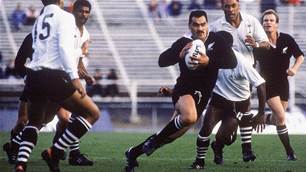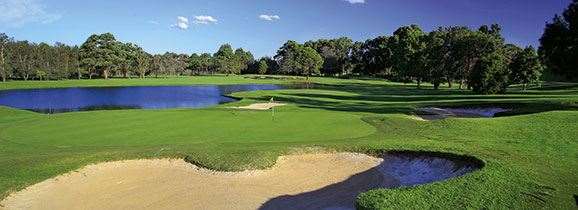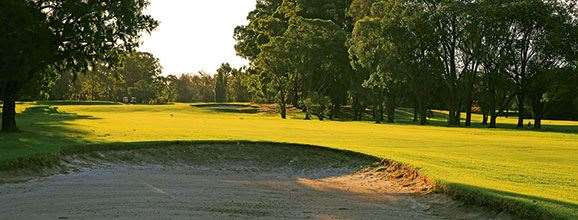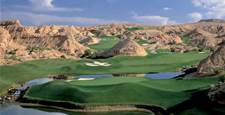An integral part of golf in Sydney's Western suburbs, Liverpool Golf Club provides a stern test in surroundings that belie its urban location.
BY STEVE KEIPERT
Liverpool Golf Club is a historic venue in the tapestry of golf within Australia’s largest city, a club with multiple previous homes and a colourful past but one that today is far more settled in its secluded verdant oasis.
The club’s formative years were chequered. Beginning in 1904 as a nine-hole course on the eastern side of the Georges River, golfers played to wire-fenced greens among wandering cattle in a part of working-class Sydney where the game looked decidedly out of place. Since these humble beginnings the club has relocated three times as the Liverpool region grew to become a substantial hub in the city’s burgeoning south-west, while also suffering through the residual effects of two world wars. The final move – to its present site at Lansvale – was brought about due to the Department of Main Roads insisting upon construction of a highway through the middle of the old Collingwood estate layout.
In late 1964 the club resolved to sell that course and seek another site, eventually settling on a dairy farm at Lansvale with established treelines and considerable aesthetic assets. Government red tape halted the rezoning and approval processes as hardy members continued to play the Collingwood course surrounded by bulldozers and other construction equipment. Work began on the new Bob Green-designed course in 1969 ahead of a complete transition two years later.
Upon opening the new site in 1971, New South Wales governor Sir Roden Cutler referred to the course as a breathing space in a heavily populated area. Forty-three years later and that premise holds true. Liverpool today is a sanctuary amid one of Sydney’s most populous regions, an excellent layout separated from the hustle and bustle by just enough distance to create a sense of escape. “You’re in the middle of Sydney but you wouldn’t know it,” says Peter Summers, the club’s general manager.
The course is situated on a peninsula on the banks of the Georges River and Prospect Creek, giving rise to both a pleasant setting and interesting course. Green’s design has remained largely unaltered in recent years, save for some bunker reshaping and restoration. That’s a rarity in an era of seemingly constant tweaking and teasing as new boards and new committees at golf clubs make changes to their most important product, often just for change’s sake.
Yet not a Liverpool, where the club’s reputation for a stern but fair test saw it land a pair of NSW Opens in 2004 and 2005, won by Peter Lonard and Michael Wright, respectively. One area where Liverpool has pulled itself into the 21st century is the most important – adding youth to its membership profile. A recent membership push yielded a healthy influx of new members in a category aimed squarely at 21 to 35-year-olds as the progressive club builds for the future.
For a mostly flat golf course, Liverpool packs a punch. It is armed with one of the highest Slope ratings in Sydney (139 from the back markers) and what it lacks in elevation changes it makes up for in variety in green shapes and complexes. A handful of small, perched greens complement several larger, flatter putting surfaces that highlight the intrinsic key to good scoring here: pinpoint iron play. A greens renovation program carried out between mid-2010 and mid-2012 has the bentgrass greens looking and playing fresh – just make sure you avoid the hazards sitting beside them. A handful of holes feature greenside water hazards but on most occasions it’s the sand that should be avoided.
One characteristic evident across the Liverpool layout are the sets of deep greenside bunkers. Artfully shaped with numerous lobes, the bunkers are cavernous. Most of the fairway traps aren’t overly penal unless the lip intervenes but almost all of the greenside bunkers feature flashed-up faces that usually won’t complicate the escape shot but have the effect of shielding the golfer’s view of part of the green from back in the fairway, creating the impression the target is smaller than it is.
After a modest par-4 to open, the course presents its toughest hole at the 2nd. The gun-barrel-straight par-4 stretches to 420 metres from the rear tee and plays slightly downhill with out-of-bounds not far from the right edge before rising to a raised green that’s small considering the length of the approach. Any running shots need to be threaded between a pair of bunkers that shrink the green’s entrance. One of the front nine’s best holes is the par-3 4th, a 158-metre gem across water to a wide green that’s deceptively shallow. The water isn’t in play for low-handicap golfers so much as the series of bunkers ringing the putting surface. It’s a good time to strike your crispest iron shot.
For a layout that frequently changes direction, sharp doglegs aren’t overly abundant among Liverpool’s par-4s. One exception is the 5th, a 351-metre dogleg at the far reaches of the golf course. The hole turns hard left at the driving zone and invites a powerful right-to-left shot from the tee. Drives that turn too much risk being blocked out from the green by trees bordering the 5th and 6th holes while more trees and Prospect Creek loom on the outside of the bend. The sloping green is framed to receive shots from the centre of the fairway but shaped approaches can get lucky if the contours are used wisely.
The best hole on the front nine – and perhaps the entire course – is the 8th. A short par-5 at 474 metres, the hole moves from a chute of trees surrounding the tee to an open fairway with a huge lake flanking the left side and towering gums opposite. The fairway snakes around the lake to a green set on the far side of the water. It’s a relatively easy three-shotter if you choose to play it that way; dare to take it on in two, though, and you risk not only a wet result but facing the same shot again after a penalty drop. For those laying up, a lone white gum through the fairway in the distance is a good lay-up aiming point and leaves a nice distance from which to pitch onto the broad green.
On the back nine, the 11th is Liverpool’s sharpest dogleg, an almost 90-degree turn to the right with a sparse grove of pine trees protecting the inside corner. It’s an inviting driving hole on what is a meaty 400-metre par-4. More beefy two-shotters await at the 15th and 16th, which measure 405 and 406 metres, respectively. The former moves over a spine in the fairway that can kick balls near a water hazard not visible from the tee before flattening towards a large green that reveals more of its size the closer you get to it. The latter turns slightly left around water that can catch short, pulled drives before opening to another well-protected green complex framed by three bunkers.
The finish is powerful, starting from the 15th hole, but the best birdie chance comes at the par-5 17th. The fairway rolls downhill towards the same sprawling lake that’s in play next to the 9th and 18th greens but isn’t in reach from the penultimate tee. Instead, the second, third and any subsequent shots must avoid this water hazard that looms up the right side of the second half of the 481-metre hole. Many a promising score has literally gone to water at this innocuous second-last hurdle.
Par-3 closers are rare but few are as exciting as Liverpool’s 167-metre finale. This is where journeyman pro Anthony Summers’ chance to win the NSW Open came to a watery anguish a decade ago. Coming off an eagle at the 17th that tied Lonard for the lead, Summers blasted a woefully wide iron shot into the lake, 40 metres from dry land. It’s a shared ignominy as many a member and visitor has done the same, because the last hole invites a left-to-right iron shot but punishes anything where that curve is overcooked. There is enough grass and sand on the left to offer a generous safety option, but something tacit lures golfers’ eyes and egos to that right side.
THE COURSE
LOCATION: Hollywood Drive, Lansvale. About 40 minutes’ drive west of the Sydney CBD via the Hume Highway.
CONTACT: (02) 9728 7777.
WEBSITE: www.liverpoolgolf.com.au
DESIGNER: Bob Green (1971).
SLOPE RATINGS: Men: 139/133; Women: 134.
PLAYING SURFACES: Bentgrass (greens), kikuyu (fairways and rough).
COURSE SUPERINTENDENT: Mark Schroder.
PGA PROFESSIONAL: Brent Dale.
GREEN FEES: $45 (midweek), $50 (weekends). A current midweek green fee special offers a round for two golfers in a cart for $90.
THE CLUB
MEMBERSHIPS: Current annual membership fees are $1,720 for full members and $1,380 for associate members. Junior members pay $140 (age 14 or younger), $350 (ages 15 to 17) or $470 (ages 18 to 20). Multiple other categories of membership are available. One special in operation allows men and women aged 21 to 35 to join for $125 with annual fees of $1,040 for men and $590 for women.
CORPORATE GOLF: The club is a popular corporate golf day venue and offers a variety of packages depending on the size of the field, with green fees ranging between $30 and $44 per player.
FUNCTIONS: Liverpool Golf Club caters for a multitude of functions, including weddings, conferences and other special events. The versatile Oak Point Room is ideal for weddings and seats up to 200 people in an upstairs section of the clubhouse with tremendous views across the golf course and lakes.
Related Articles

International Spotlight: Omanu Golf Club

Celebrity Kiwi couple tee off in paradise


















